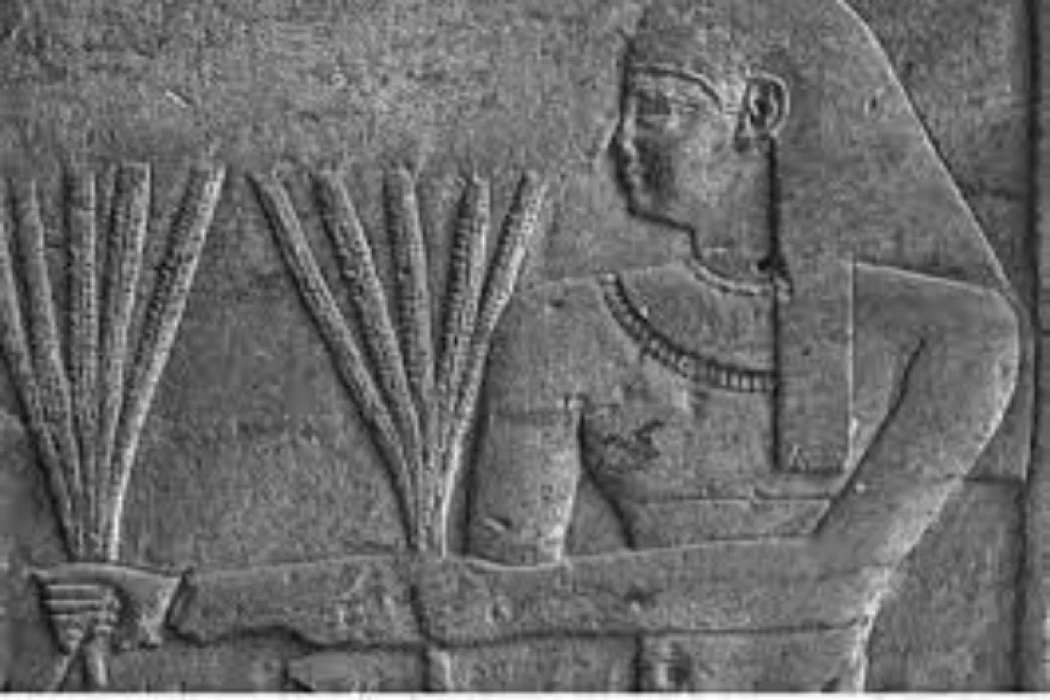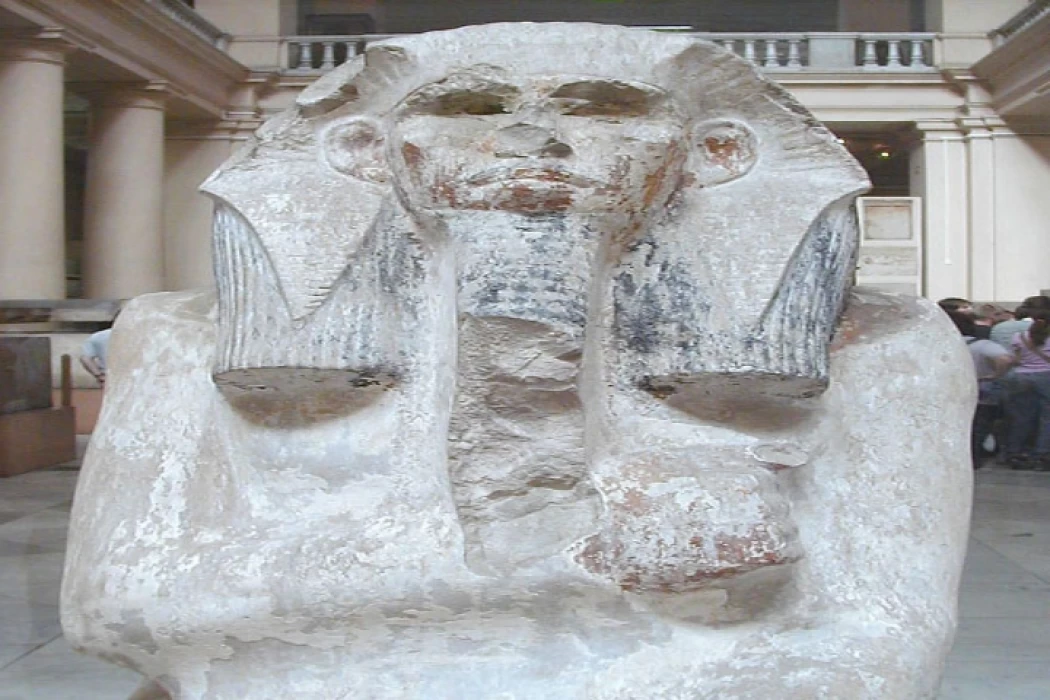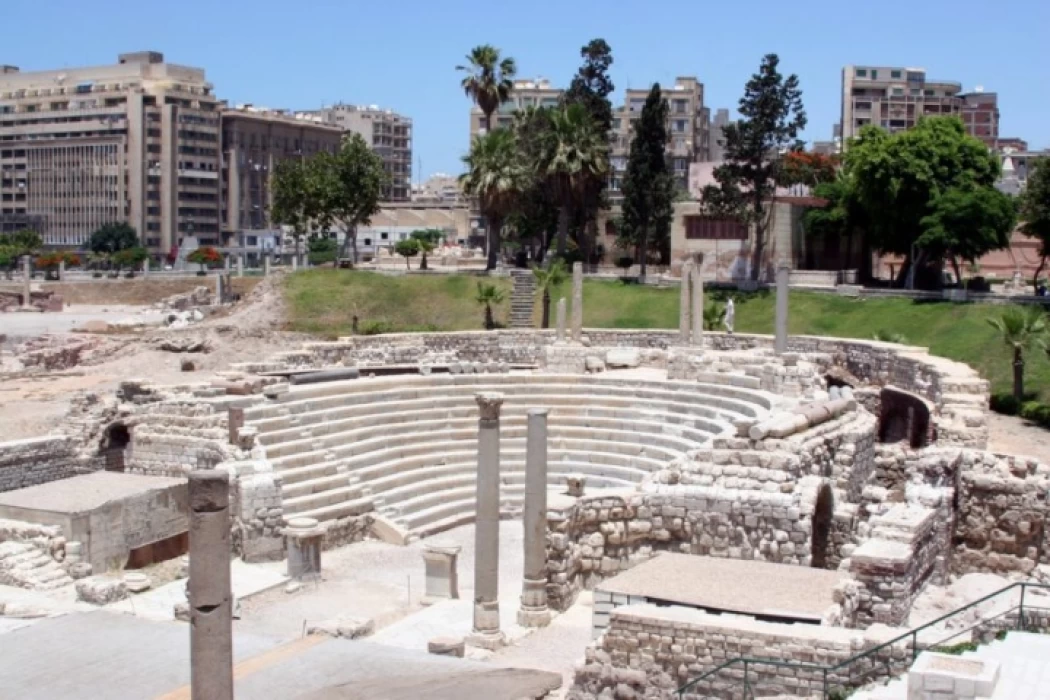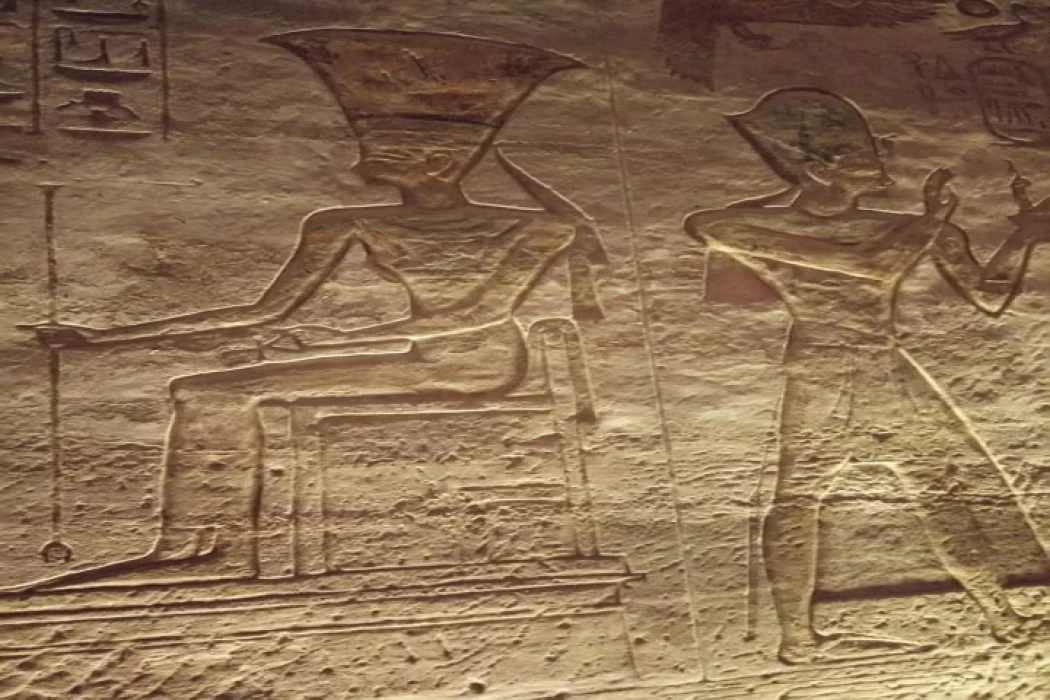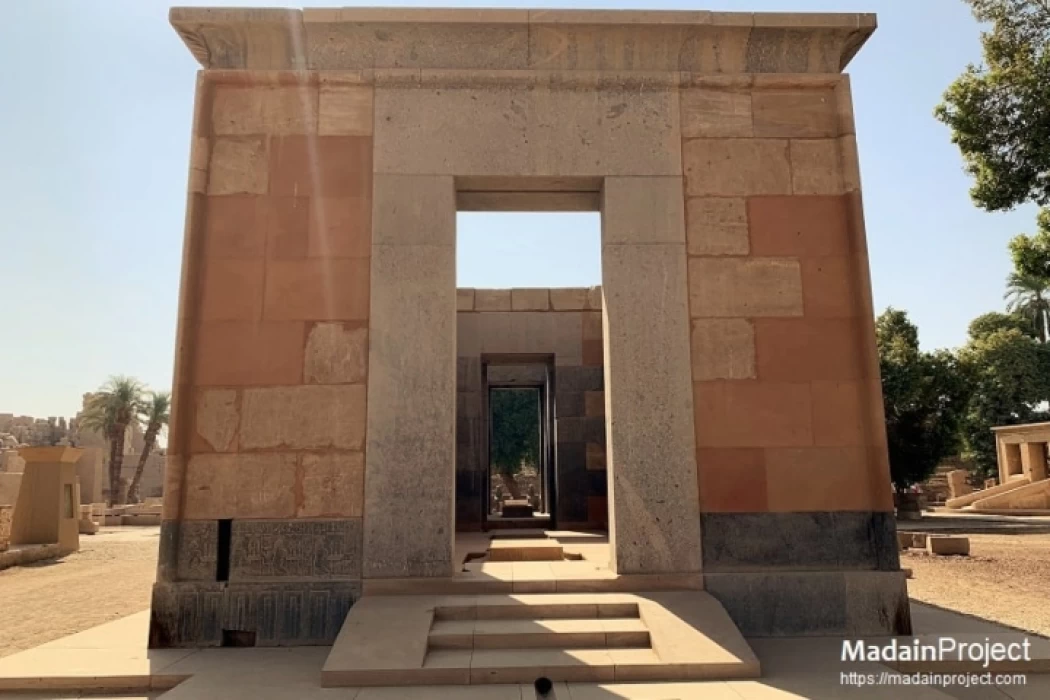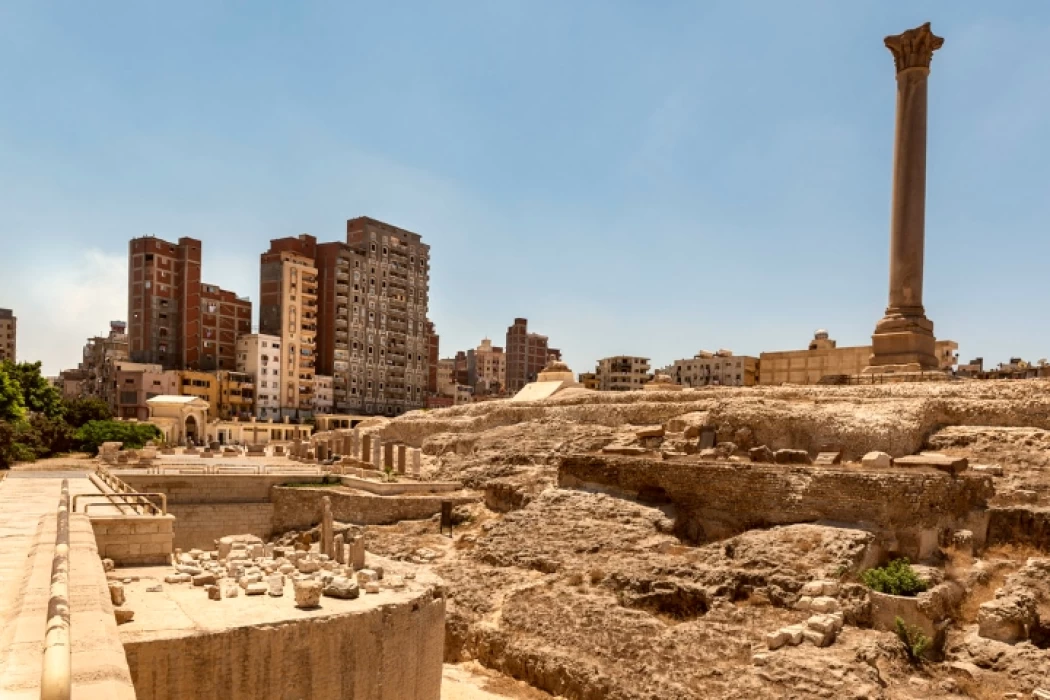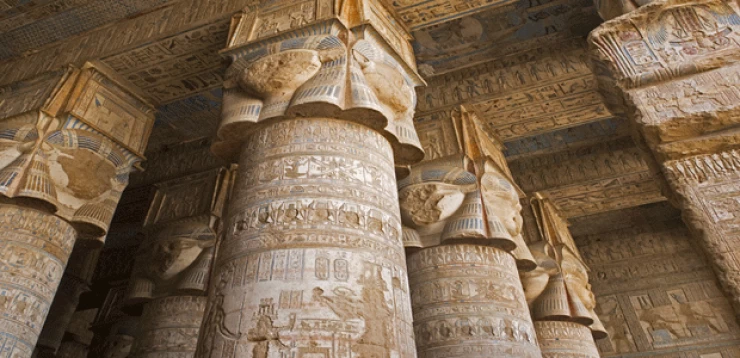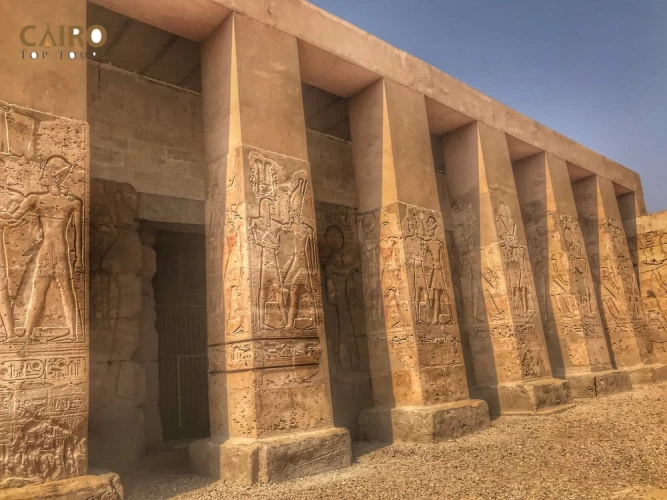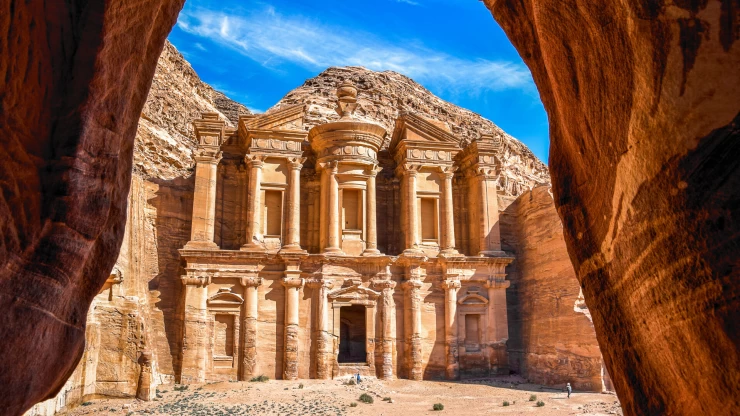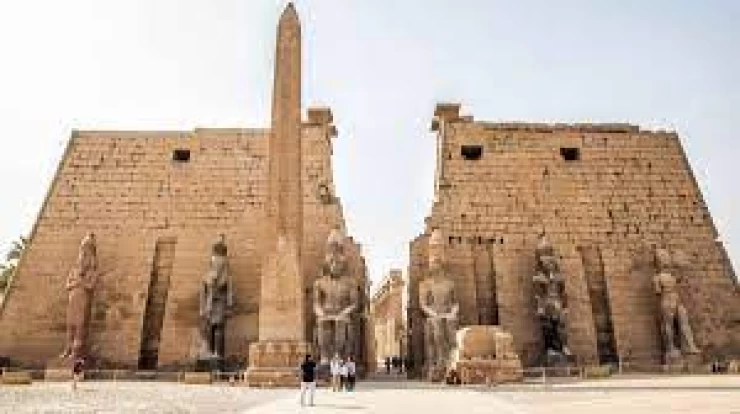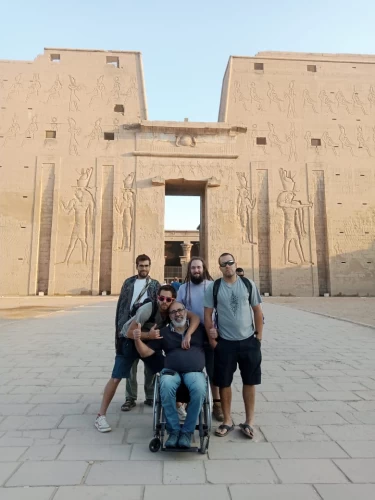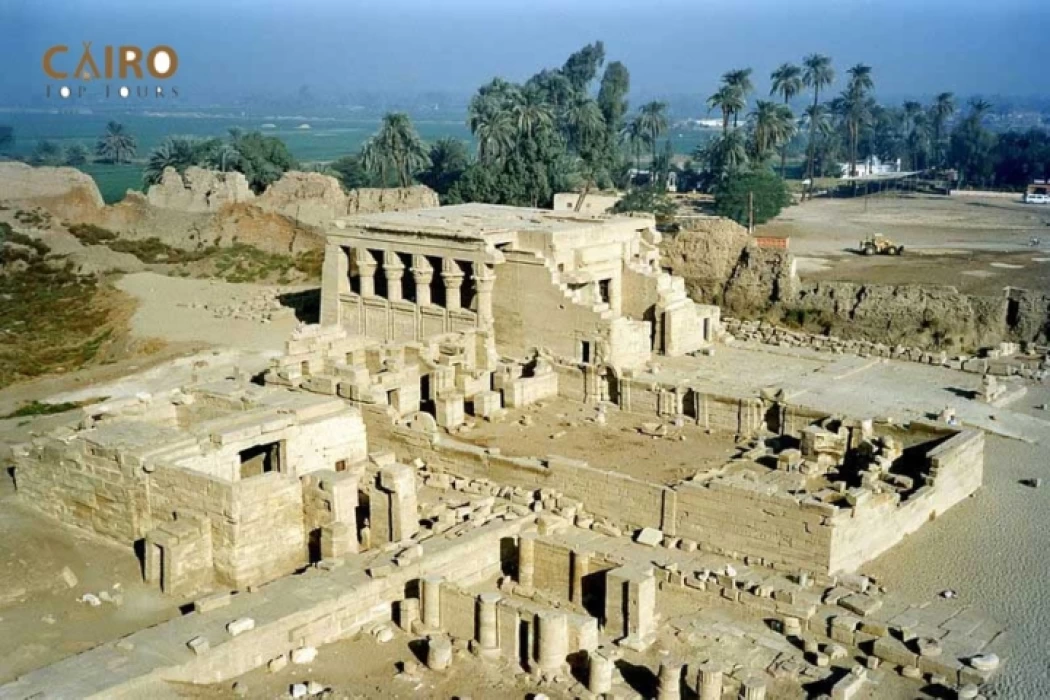
Temple of Dendera / Luxor
Dandara is located about 55 kilometers north of Luxor on the eastern and western shores of the Nile, almost opposite the city of Qena on the other bank of the Nile. The ruins of the ancient Egyptian city are located near the new city in the mountainous desert area.
History,
In a relatively secluded location on the edge of the desert, about 2.5 km to the southwest of the modern town, there is a Greek/Roman temple, known in ancient Egypt as "lunet" or "tantra". The site of the modern town was the capital of the Upper Egypt region.
The history of Dendera dates back to the pre-dynastic era of Egypt. This is evidenced by the ancient tombs near the wall of the temple of Hathor. Dendera was the capital of the Sixth Court of ancient upper Egypt, and Hathor was its main idol. The Hatur temple system dates back to the reign of Khufu, and Pepi I also later restored it.
At the time of the excavation of the temple, the temple was almost half covered with sand, which preserved the drawings on the walls and pillars of the temple, as well as preserved them from looting. The upper rooms of the temple were found to be haunted, and people lived in them for long periods. They used to light a fire for their food and heating, so even today we find traces of haze on the internal ceilings of the temple, which makes the restoration process difficult.
The wall,
Originally there were three walls around the area of the idol Hathor, there are none to the first wall surrounding the temple in good condition. The wall is about 290 meters long and about 280 meters wide. The thickness of the base of the wall ranges from 10 to 12 meters, and its height reaches about 10 meters.
Hathur temple,
The temple of Hathor, built on this place during the ancient sixth dynasty, became famous, and its construction was developed later during the reign of the Greeks and Romans. It was built on the shore of the Nile, taking a direction from North to South. The foundation of its structure, which was built during the reign of the Patriarchs, dates back in its image to the ancient temple. The construction of the parts of the temple that can be visited Now began during the reign of the Ptolemies and was completed by the Roman tsars.
The process of building the New Temple lasted about 200 years, it is distinguished by its unique architecture, rich in paintings and inscriptions. Also on its walls, there are hieroglyphic manuscripts. The walls and columns are covered with extremely fine and beautiful carved statues. The inscriptions on the inner walls of the temple show the Roman Caesars Augustus, Tiberius, and Nero making offerings to the gods in the manner followed by the ancient Egyptians.
It comes after entering the Great Gate of the temple a large hall, the construction of which was started by Caesar Augustus, and completed by Caesar Nero. It is mounted on 24 columns, arranged in four rows. It has a height of 27 meters and a length of 43 meters. This is followed by three other halls of different sizes and 11 small side rooms. The temple is 81 meters long and 34 meters wide. The unveiling and restoration of the temple were started in 1875 by "Johannes domschein".
The temple of ISIS, a small temple, is located next to the western corner of the large temple and was built by the Roman Tsar Nero. The two temples are connected by Temple Road about 130 meters long. There is also a "mamizi" (birthing house ) north of the temple of ISIS and about 70 meters away from it, which is gifted to the goddess Hathor.
A sacred Sea is located west of the temple, on which palm trees are newly growing. There are wells dug into the ground, including a Nile gauge. Behind the temple of Hathor, there is a small temple of ISIS and the House of Mamisi. The construction of the temple of ISIS was ordered by Tsar Augustus. The Birth House (mamisi) is slightly larger than it and is located north of the Great Temple of Hathor, built by Tsar Trajan. Some inscriptions were painted on its walls in the reigns of Hadrian and Antonius Pius.
Latest Articles
Admin
Neper God Of Grain
Neper was the deity of grains, particularly cereals that were important in Ancient Egypt, such as wheat and barley. It was stated that he foretold when the crops would grow, be harvested, and disappear.
Admin
Djoser
Djoser was an ancient Egyptian pharaoh of the 3rd Dynasty during the Old Kingdom and was the founder of that epoch. He is also known by his Hellenized names Tosorthros (from Manetho) and Sesorthos (from Eusebius). He was the son of King Khasekhemwy and Queen Nimaathap, but whether he was also the direct successor to their throne is unclear. Most Ramesside king lists identify a king named Nebka as preceding him, but there are difficulties in connecting that name with contemporary Horus names, so some Egyptologists question the received throne sequence. Djoser is known for his step pyramid, which is the earliest colossal stone building in ancient Egypt
Admin
Kom Al Dikka Alexandria
Kom El Deka, also known as Kom el-Dikka, is a neighborhood and archaeological site in Alexandria, Egypt. Early Kom El-Dikka was a well-off residential area, and later it was a major civic center in Alexandria, with a bath complex (thermae), auditoria (lecture halls), and a theatre.
Admin
The God Anuket
Anuket, in Egyptian religion, the patron deity of the Nile River. Anuket is normally depicted as a beautiful woman wearing a crown of reeds and ostrich feathers and accompanied by a gazelle.
Admin
The Red Chapel of Hatshepsut
The Red Chapel of Hatshepsut or the Chapelle rouge was a religious shrine in Ancient Egypt. The chapel was originally constructed as a barque shrine during the reign of Hatshepsut. She was the fifth pharaoh of the Eighteenth Dynasty from approximately 1479 to 1458 BC.
Admin
The Serapeum of Alexandria
The Serapeum of Alexandria in the Ptolemaic Kingdom was an ancient Greek temple built by Ptolemy III Euergetes (reigned 246–222 BC) and dedicated to Serapis, who was made the protector of Alexandria, Egypt. There are also signs of Harpocrates. It has been referred to as the daughter of the Library of Alexandria.
